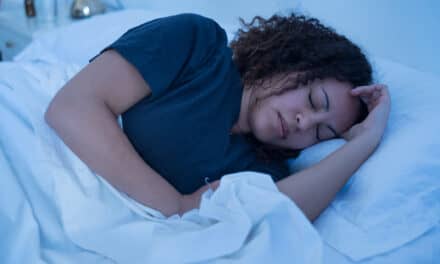The American Academy of Dental Sleep Medicine (AADSM) recently held its 23rd Annual Meeting in Minneapolis. With more than 1,000 dentists and exhibitors attending, the meeting focused on advancements in oral appliance therapy, a treatment for obstructive sleep apnea that uses a device custom-fit by a dental professional to maintain an open, unobstructed airway.
“Dental sleep medicine is a fast-growing field, with new insights being gained every year,” said Kathleen Bennett, DDS, president of the AADSM. “The latest research is vastly increasing our understanding of the benefits of oral appliance therapy, and we are finding new ways to help patients thrive in the face of obstructive sleep apnea.”
The Annual Meeting featured new research on dental sleep medicine, including findings showing direct correlations between oral appliance therapy and successfully controlled sleep apnea, comparisons of psychological improvement and symptoms that may help dental professionals and physicians work together to identify at-risk patients.
Specific research findings from the Annual Meeting, as well as clinical research award winners, include:
- “Alternative Sleep Apnea Treatment Proven Successful for Sufferers and their Partners”: Twenty patients and 10 partners provided assessments before and after oral appliance therapy, and results show that patients who adhered to oral appliance therapy experienced an improvement in their own quality of life. Partners also reported a greater reduction in the patient’s snoring and also exhibited an improvement in their own sleepiness and quality of life.
- “Different Sleep Apnea Treatments Provide Equal Psychological Improvement”: To ensure more sleep apnea patients continue to receive the most effective treatments, this award-winning study compared the effects of oral appliance therapy with those of Continuous Positive Airway Pressure (CPAP) therapy on various psychological outcomes for patients. Over a testing period of 6 months, the research found no significant difference between oral appliance therapy and CPAP on psychological outcomes, as both treatments provided significant improvements in patients’ somatisation, insufficiency of thinking and acting, agoraphobia, anxiety, depression, and sleeping problems. Author Ghizlane Aarab received the Clinical Research Award for this study.
- “Dentists and Doctors Collaborate to Detect Risk Factors of Possible Sleep Apnea”: New research suggests oral anatomic factors such as tongue size and Mallampati’s score can help predict the risk of obstructive sleep apnea. Dentists can recognize these features during regular physical and oral examinations, then refer patients to a sleep physician for a comprehensive evaluation. Partnerships between physicians and dentists will increase access to care for at-risk patients.
Additionally, several other abstracts were honored with research awards during the meeting, including:
- Student Excellence Award Winner: Kristin Dillow for “Physician Evaluation Among Dental Patients Who Screen High-Risk for Sleep Apnea.”
- Graduate Student Research Award Winners: Tatsuya Fukuda for “Effects of Response Criteria on the Success Rate of Oral Appliance Treatment for Obstructive Sleep Apnea”; and Brittany Minichbauer for “Sleep Medicine in Dental Hygiene Education.”
- Clinical Excellence Award Winners: Marie-Francoise Vecchierini for “ORCADES, a Prospective Multicenter Cohort Study of Obstructive Sleep Apnea (OSA) Patients Treated with a Custom-Made Mandibular Repositioning Device (MRD)”; and Scott Craig for “Practice Management Implications of Leading Custom Mandibular Advancement Devices.”
The entire program for the 23rd AADSM Annual Meeting, which details continuing education courses, guest speakers and discussion groups conducted at the meeting, can be found at: www.aadsm.org/AnnualMeeting.aspx.
Dental professionals interested in applying for AADSM membership should visit the AADSM website at www.aadsm.org.



